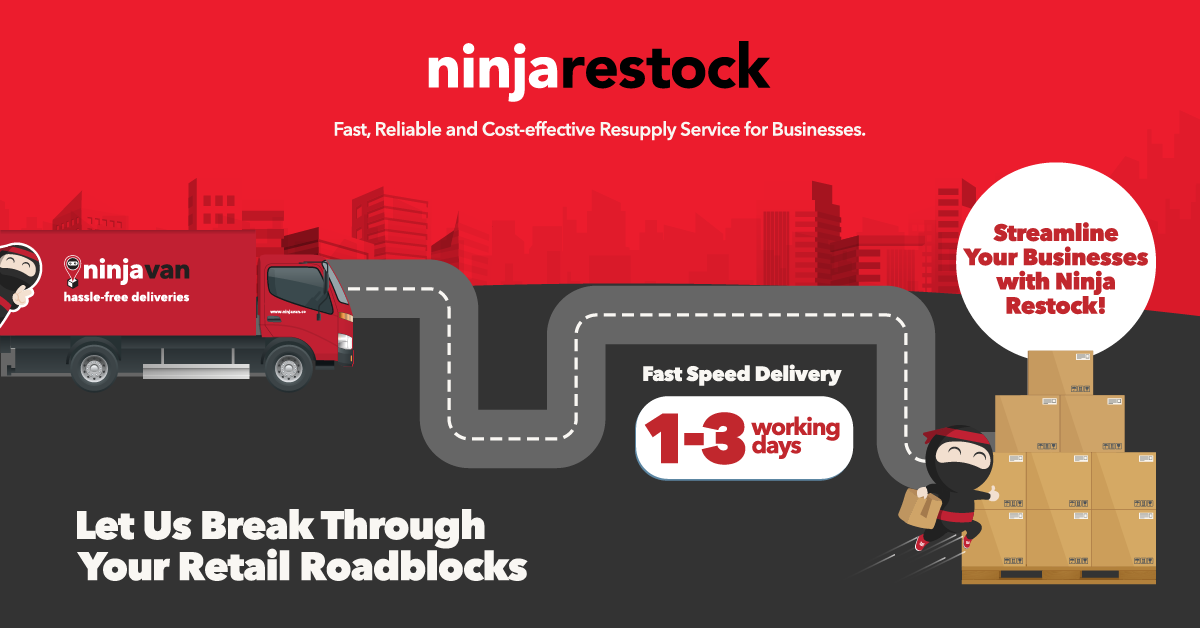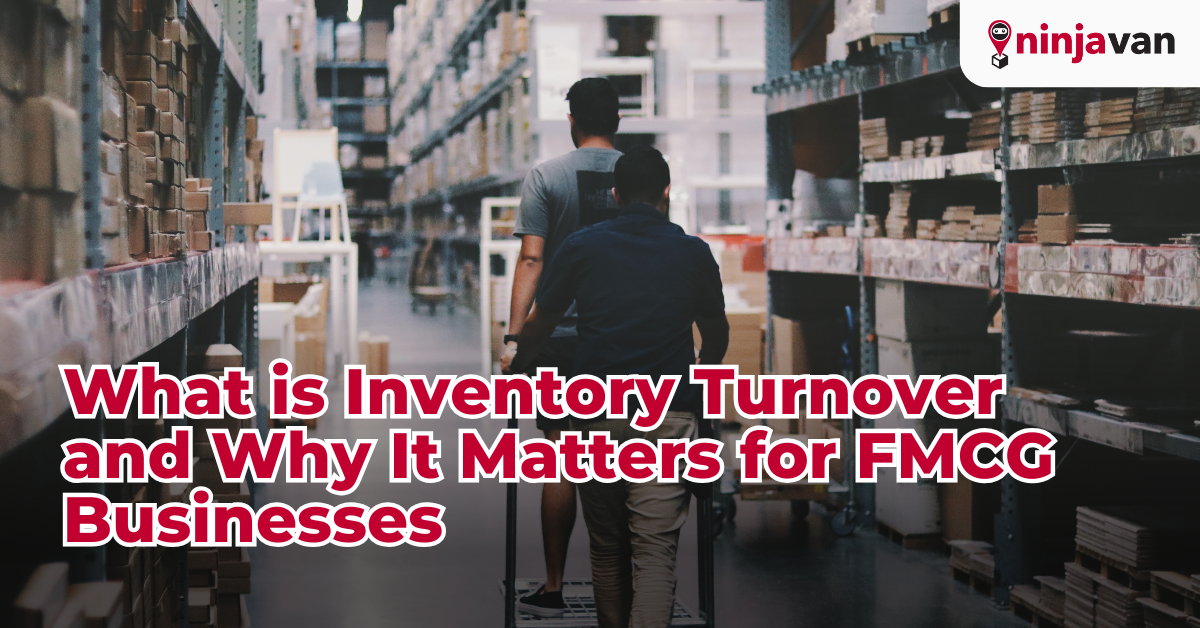Within the dynamic sphere of Fast-Moving Consumer Goods (FMCG), efficient inventory management is crucial for maintaining profitability and ensuring customer satisfaction.
A key metric in this domain is Inventory Turnover, which reflects how effectively a company manages its stock.
This article delves into:
- The concept of inventory turnover
- Its significance for FMCG businesses, and
- Strategies to optimize it for enhanced supply chain efficiency.
Understanding Inventory Turnover

Inventory Turnover is a financial ratio that measures the number of times a company’s inventory is sold and replaced over a specific period, typically a year.
It provides insights into how well inventory is managed, indicating whether stock levels are appropriate in relation to sales.
The formula for calculating inventory turnover is:
Where:
- Cost of Goods Sold (COGS): The direct costs attributable to the production of the goods sold by a company.
- Average Inventory: The average value of inventory held during the period, calculated as:
Average Inventory = (Beginning Inventory + Ending Inventory) / 2
For example, if an FMCG company has a COGS of RM500,000 and an average inventory of RM100,000, the inventory turnover would be:
Inventory Turnover = (RM500,000 / RM100,000) = 5
This means the company’s inventory is sold and replenished five times over the year.
What Is a Good Inventory Turnover Rate?
A good inventory turnover rate varies by industry, but in general:
- FMCG Industry: Approximately 5 to 10 times per year.
- Manufacturing Industry: Average inventory turnover of 5 to 10 times per year.
- Retail Industry: Average is between 2 to 4.
Interpreting Inventory Turnover Rates
| Low Turnover | High Turnover |
| Excess stock sitting too long | Frequent stockouts and lost sales |
| High storage costs | Struggles to meet demand |
| Risk of expired, outdated, or unsellable products | Increased pressure on suppliers and logistics |
Importance of Inventory Turnover in FMCG Businesses

In the FMCG sector, products are characterized by their rapid sales cycles and short shelf lives.
Examples include:
| Category | Examples | Shelf Life |
| Perishable Foods | – Fresh Produce: Fruits, vegetables, herbs – Dairy Products: Milk, yogurt, cheese – Meat, poultry, seafood | Typically a few days to a couple of weeks; require refrigeration to maintain freshness. |
| Baked Goods | – Bread – Pastries – Cakes | Generally last a few days; best consumed fresh to ensure quality. |
| Pharmaceuticals and Medical Supplies | – Vaccines – Biologics – Certain prescription drugs – Medical devices with time-limited effectiveness | – Biologics- Certain prescription drugs – Medical devices with time-limited effectiveness Varying shelf lives; strict storage requirements to maintain efficacy. |
| Cosmetics and Personal Care Items | – Natural skincare products – Organic makeup products – Fragrances and perfumes | Shelf life can range from several months to a couple of years; products with minimal preservatives may expire sooner. |
Hence, efficient inventory turnover of these products is vital for several reasons:
#1. Profitability Enhancement
- Reduced Holding Costs: High inventory turnover minimizes the time products spend in storage, thereby reducing warehousing costs, insurance, and potential spoilage.
- Improved Cash Flow: Quick conversion of inventory into sales ensures that capital is not tied up in unsold stock, allowing for reinvestment into the business.
#2. Supply Chain Efficiency
- Optimized Stock Levels: Maintaining the right balance of stock prevents overstocking and stockouts.
- Enhanced Supplier Relationships
#3. Customer Satisfaction
- Product Availability: Consistently high inventory turnover ensures that popular products are readily available, meeting customer expectations and reducing the risk of lost sales.
- Freshness Assurance: Especially for perishable goods, rapid turnover guarantees that customers receive fresh products, bolstering brand reputation and loyalty.
5 Proven Strategies to Optimize Inventory Turnover

Improving inventory turnover requires a multifaceted approach, integrating various aspects of inventory management and distribution.
Here are some strategies tailored for FMCG businesses:
#1. Accurate Demand Forecasting
- Utilize historical sales data, market trends, and seasonal patterns to predict demand accurately—reducing the risk of overproduction and excess inventory.
- Engage with retailers and distributors to gain real-time insights into consumer behavior, allowing for proactive adjustments in inventory levels.
Engaging with retailers and distributors to gain real-time insights into consumer behavior doesn’t have to be costly or complex.
Here are some straightforward, budget-friendly strategies:
| Method | How It Works | Cost-Effective Approach |
| WhatsApp/Telegram Groups | Create group chats with retailers/distributors to share updates on sales trends and inventory needs. | Free to use, quick communication. |
| Google Forms or Surveys | Send simple surveys to retailers to gather feedback on fast-moving or slow-moving products. | Free or low-cost, easy data collection. |
| Regular Phone Check-ins | Call retailers weekly to discuss stock levels and sales trends. | No special tools needed, builds stronger relationships. |
| Social Media Monitoring | Track customer inquiries, comments, and trends on platforms like Facebook and Instagram. | Free insights directly from consumers. |
| POS Data Sharing | Request sales reports from retailers to analyze which products sell the fastest. | Utilize existing data without additional costs. |
| Incentives for Feedback | Offer small perks (discounts, vouchers) to retailers who share valuable insights. | Encourages participation without large investments. |
These simple strategies help businesses adjust inventory efficiently without incurring high costs.
#2. Adopt Just-in-Time (JIT) Inventory
- Adopt Just-in-Time (JIT) Inventory principles to align inventory replenishment closely with production schedules and customer demand, minimizing holding costs.
How JIT Works
- Analyze sales trends and customer demand via demand forecasting.
- Supplier coordination
- Warehouses keep minimal stock holding to avoid overstocking.
- Real-time inventory monitoring
- Efficient logistics & delivery via transporters and distributors.
👉 Related article: This Method Can Solve Overcomplicated Long Lead Times
#3. Direct-Store-Delivery (DSD)
- Implement DSD systems where suppliers deliver products directly to retail stores, bypassing central warehouses. This reduces handling times and accelerates product availability.
How Direct-Store-Delivery (DSD) Works
| Step | Description |
| 1. Order Placement | Retailers place orders based on sales trends, or suppliers automatically restock based on pre-set agreements. |
| 2. Order Processing | The supplier processes the order and prepares stock at the distribution center or warehouse. |
| 3. Loading & Transport | Goods are loaded onto lorries or trucks, ensuring proper handling, especially for perishable items. |
| 4. Direct Store Delivery | Transporters deliver stock directly to retail stores, bypassing the central warehouse. |
| 5. Shelf Stocking & Merchandising | Delivery personnel may assist in stocking shelves, rotating stock, and ensuring proper product display. |
| 6. Real-Time Data Collection | Sales and inventory data are collected at the store level to optimize future deliveries. |
Benefits of DSD
- ✔ Fresher products
- ✔ Faster replenishment
- ✔ Lower warehousing costs
- ✔ Better merchandising
💡 Interesting! DSD is commonly used in industries like food and beverages, personal care, and household goods to maintain a smooth and efficient supply chain.
#4. Leveraging Technology
- Inventory Management Software: Invest in advanced software solutions that provide real-time tracking, automated reordering, and analytics to inform decision-making.
- IoT and RFID Technologies: Utilize Internet of Things (IoT) devices and Radio-Frequency Identification (RFID) tags for enhanced visibility into inventory movements and stock levels.
#5. Continuous Review and Adaptation
- Regular Audits: Conduct periodic inventory audits to identify discrepancies, obsolete stock, and areas for improvement.
- Responsive Supply Chain: Develop a flexible supply chain capable of adapting to market fluctuations, promotional activities, and unforeseen disruptions.
Fast, Flexible & Trackable: Ninja Restock

Optimizing inventory turnover is essential for FMCG businesses to maintain profitability and supply chain efficiency.
However, traditional lorry transport and truck transport often come with challenges like high minimum order quantities (MOQs), long waiting times, and limited tracking capabilities.
With Ninja Restock, businesses can overcome these issues with a smarter, more flexible restocking solution:
- ✅ No MOQ – Restock what you need, when you need it.
- ✅ Faster Delivery – Reduce lead times and keep shelves stocked effortlessly.
- ✅ Real-Time Tracking – Always know where your stock is with transparent tracking.
- ✅ Dedicated Account Manager – Get personalized support to optimize your restocking strategy.

Instead of dealing with rigid logistics processes, FMCG businesses can now streamline their inventory management with a more agile, cost-effective solution.
With Ninja Restock, keeping up with demand has never been easier!
Ready to restock smarter? Try Ninja Restock today – No MOQ, faster delivery!







